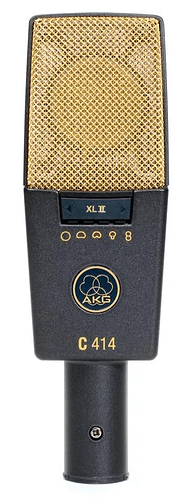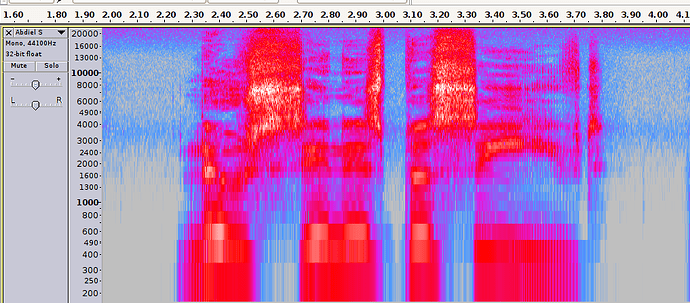Attempting to fix my seriously incessant sibilance is making me go deaf and blind. Can someone give me guidance if I provide a brief sound file? I use Paul’s de-esser plug-in, an AT2020 XLR mike, and Duet 1/Maestro2 interface. Thanks in advance for any assistance.
I have masssstered Paul-L’s de-esser. If you attach a few sibilant seconds to a post, I can suggest settings.
Great. Thanks. I have attached a raw WAV file. It will be a challenge! Thanks for any help.

The de-clicker plugin is the same place you got the de-esser plugin.

DeClicking process is computationally intensive, (i.e.slow)
Terrific. Thanks for your help. A great improvement.
Another question for you, if you don’t mind. I am reading a debate about when the de-esser is applied – before or after EQ and Compress. Thoughts?
I would always de-ess after the eq and compressor otherwise you might add other high frequencies which might cause problems. For example if you are de-essing before equing and you are boosting your vocals highs the harsh sibilance might come back.
Having listened to that again, -22dB is taking off too much: I’d now go with -20db threshold on the De-esser.
Equalization can undo de-essing. Compression will, to some extent, undo de-essing. So de-essing should be the last step.
If the sibilance is really excessive you could de-ess twice: once at any point in the workflow, to remove the worst offenders, and then a second time as the last step, after compression & equalization.
Thank you both. This has helped me solve the puzzle. I’m new to the Forum and very appreciative of the prompt and friendly assistance you have provided.
If the sibilance is really excessive you could de-ess twice:
I wonder how much of this you can help with a sock over the microphone. Too many makers are producing microphones with piercing sound because it’s “more professional.” It’s not professional to need multiple layers of correction just to produce a simple, pleasant voice track.
There’s anecdotal evidence that fan or environmental noise can cause sibilance.
What.
Not directly, it turns out stiff Noise Reduction can cause tonal problems. So you can prevent sibilance by unplugging the refrigerator while you record.
Then there’s the Pillsbury Cookie Problem. Pillsbury discovered that home cooks preferred by a very firm margin to “Do Something” to a package of cookie mix. So they left the egg out. You have to add the egg with the milk and the product flew off the shelves.
It’s can’t be professional unless you DeEss it.
Koz
That should be easy. Maybe a sock over my head is worth a try as well. I just recently read about the “pencil trick” – securing a pencil with a rubber band vertically down the middle of the front of the condenser mike. I haven’t tried it yet. ???
I am in a pretty quiet environment, however – a closet lined with quilts. Well, just for recording. They let me out to do other things. Interesting thought about noise reduction.
Maybe a sock over my head is worth a try as well.
I wasn’t joking. If your microphone is naturally bright and crisp, sometimes getting rid of a little of the crisp right at the top is worth while. I’m going to ask one of our new audiobook performers to check out various clothing groups over her microphone just to get a feel for how they sound.
I look forward to the “Tea Towel” solution to a harsh presentation.
I just recently read about the “pencil trick” – securing a pencil with a rubber band vertically down the middle of the front of the condenser mike. I haven’t tried it yet.
That totally works, but you have to get the pencil from Venus.
The planet, not the manufacturer.
Koz
I would not be shocked if on cheap condenser microphones, the rubber band stops the grill from sympathetic vibration. Take the pencil and smack the grill. If it rings as a bell, put the rubber band on.
Koz
There is no condition that a good engineer can’t make a lot worse.
Koz
I too would be grateful for help with de-essing. Attached is an excerpt from the raw file. I do have the DeEsser plug in as posted above, but no idea what settings to use.
Also, as I gather de-Essing would be the last step in mastering, here is the same excerpt after applying the recommended RMS Normalize then Limiter.
I just recently read about the “pencil trick” – securing a pencil with a rubber band vertically down the middle of the front of the condenser mike.
If you do try that, you have to post back and say how it went. We’ll need before and after voice tests.
https://www.kozco.com/tech/audacity/TestClip/Record_A_Clip.html
What I expect is somebody on one microphone got an improvement and they blabbed it all over the internet. You might get an acoustic shadow if the microphone was using a tiny, pre-baked condenser capsule instead of a real, inch-wide condenser element like this one.
See that big round thing in the center. That’s the condenser. Your voice pushes that around and makes a sound signal. That type wouldn’t work.
Cheap, Inexpensive microphones that don’t cost very much use one of these inside.

It’s still a condenser, but it’s about 3/8" (3/4cm) wide. Oddly, that might work with the rubber band trick.
We are on the edges of our seats.
Koz
There is constantly too much energy in the sibilance-zone between 7.5kHz & 8kHz,
visible on the spectrogram …
Which could be corrected with equalization, (rather than de-essing, as it is constant issue).
But the sibilance isn’t excessive, IMO.
The main problem is constant hiss,
(weirdly for a raw recording is in a narrow-band between ~2kHz & ~4kHz).
The next problem is the intermittent crackling.
Then equalization: it’s too bassy.
[ The performance is very good though ].
Thank you for this analysis. Kind and generous.

